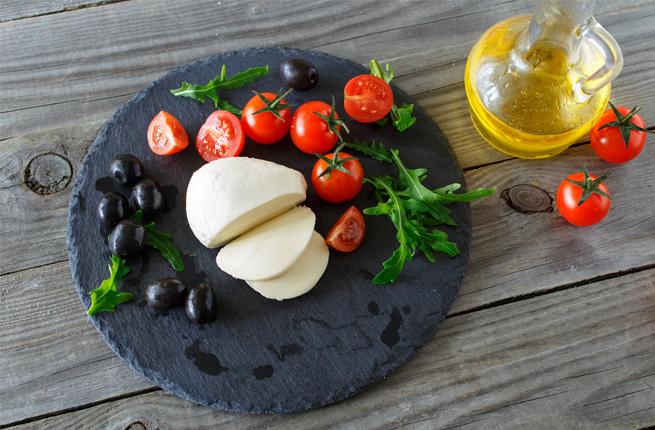
Everyone knows “mozzarella,” the melted, stringy cheese on pizza or lasagna. But that rubbery, supermarket variety is light years from its source in the marshy countryside between Rome and Naples. After one taste of authentic, squeaky-fresh buffalo mozzarella, eaten within hours of its production at a dairy just off the ancient Appian Way, you’ll never return to the factory-made facsimile. This delectable, semi-soft cheese made from water buffalo milk is so valued that the European Union granted it Protected Designation of Origin status in 1996. True buffalo mozzarella must be made with a traditional recipe and only in the region from just south of Rome to just south of Naples. If you are traveling in the area and want to be sure to get the real thing, look for dairies (caseificios) or farms (azienda) with a DOP or DOC (Controlled Designation of Origin) seal to ensure you are buying authentic Mozzarella di Bufala Campana.
Water buffalo, native to Asia, appeared in the marshes of southern Italy centuries ago. Exactly how and when is open to debate, but the lumbering beasts, with their curved horns and wide hooves, thrived in the swamp. Initially, peasants used them to work the marshy fields, and then later began to utilize the animals’ creamy, protein-rich milk. The first recorded mention is in 12th-century texts describing monks of Capua offering pilgrims bread with a pinch (mozzare) of cheese. By the 16th century, the Pope’s cook was serving it in Rome, and two centuries later, the Bourbon kings of Naples domesticated the buffalo and built dairies.
Recommended Fodor’s Video
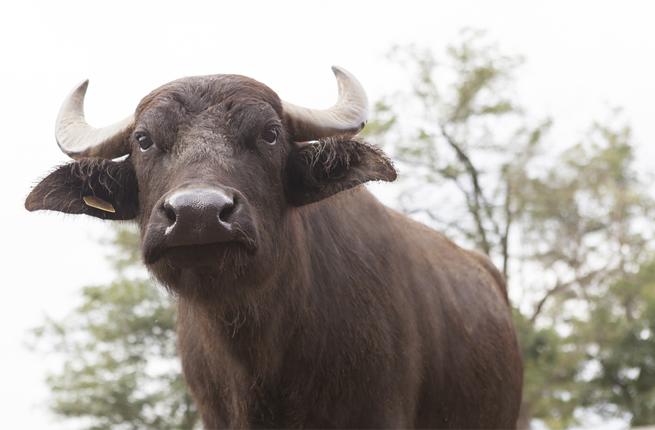
If your adventure includes a jaunt into the countryside, here’s a sightseeing journey with mozzarella (or a mozzarella journey with sights). Deep in buffalo country, farms and dairies show the cheese-making process and offer a taste of the products made from buffalo milk. As you journey from north to south, you will taste that the mozzarella of each region is unique with a specific terroir (not unlike wine) reflecting the difference in soil. The white cheese should be firm and weep milk when it is cut.
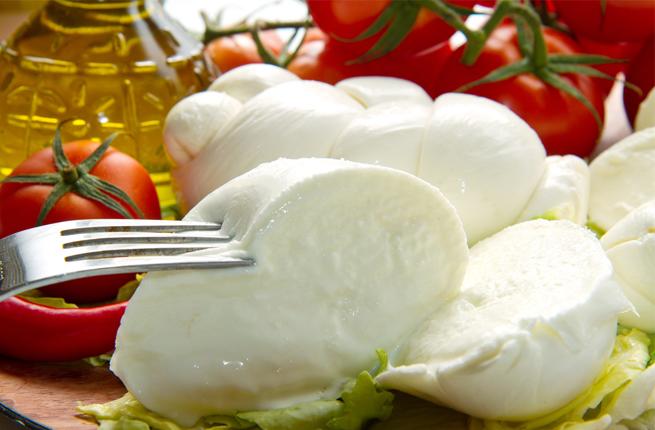
The first stop is Fondi, 40 miles south of Rome. The town’s ancient layout and architecture engage visitors with charming alleys, Roman walls, and rustic restaurants. The Appian Way (Via Appia Antica) runs through the town, and several buffalo farms lie nearby. Call ahead to ensure the farms are open to visitors.
- Casearia Casabianca, Via S. Anastasia, 2077
- Caseificio Paolella, Via Pantanello
Farther afield, about 130 miles southeast of Rome, lies Caserta, home to the vast Baroque palace of the Bourbon kings of Naples, a UNESCO World Heritage Site. The palace suffers a bit from neglect but is still worth seeing for the magnificent park and cascade fountain which is several football fields long. On the palace grounds, you’ll find the main office of the Consorzio di Tutela della Mozzarella di Bufala Campana, the organization that protects, safeguards, and promotes authentic buffalo mozzarella.
- Reggia di Caserta, Regie Cavallerizze, Via Gasparri 1, 81100 Caserta.
The nearby marshy countryside is home to many outstanding buffalo farms:
- Caseificio Marrandino, Via Pagliuca 2, Castelvolturno
- Torre Lupara, via Torre Lupara, Pastorano
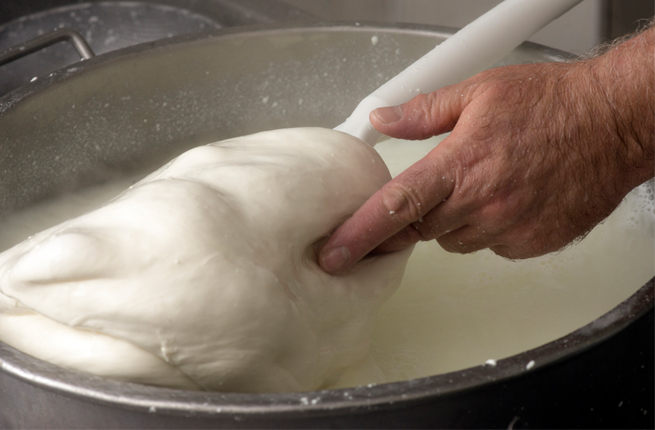
Even farther south, past Naples and the Amalfi coast, lies Paestum, whose Greek temples (built about 2,500 years ago) are among Italy’s greatest treasures. This area is another center of buffalo mozzarella production.
Our picks:
- Tenuta Vannulo Organic Farm, via Galileo Galilei, 101, Capaccio Scalo
- Barlotti Caseifico, Via Torre di Paestum 1, Capaccio Paestum
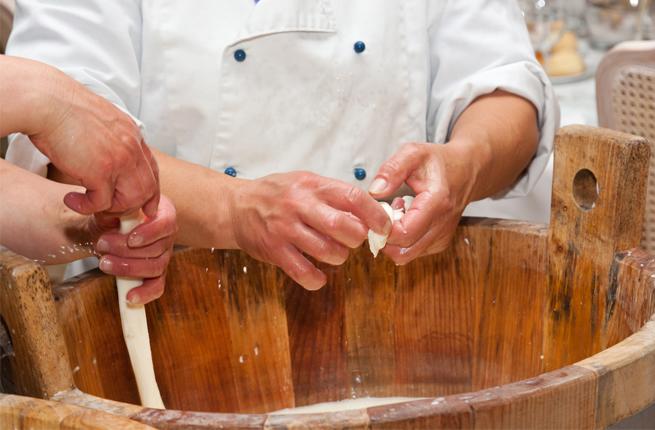
The fresh cheese, made by hand- or machine-stretching the curd in hot water until it is elastic and white, then pinching off pieces, should be eaten the day it’s made. Sold in a plastic bag containing watery whey, the mozzarella should never be put in the fridge but kept at room temperature and consumed fresh within two days. If any is left over at this point, it should be cooked.
If you are visiting Rome but don’t have time to seek out countryside farms, many shops, markets, and delis bring fresh Mozzarella di Bufala de Campana to town daily.
Our picks for shops:
- Volpetti, Ostiense, Testaccio, Via Marmorata 47
- Antica Caciara, Trastevere, Via di San Francesco a Ripa 140 A/B
- Franchi, Vatican area, Via Cola di Rienzo 200
- Campagna Amica del Circo Massimo, Farmers Market, Via di S. Teodoro 74


